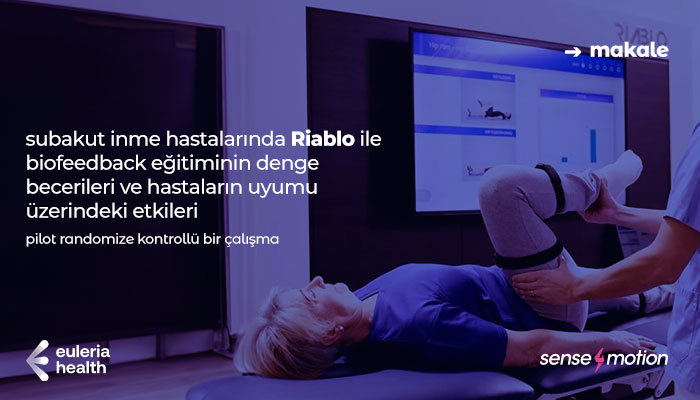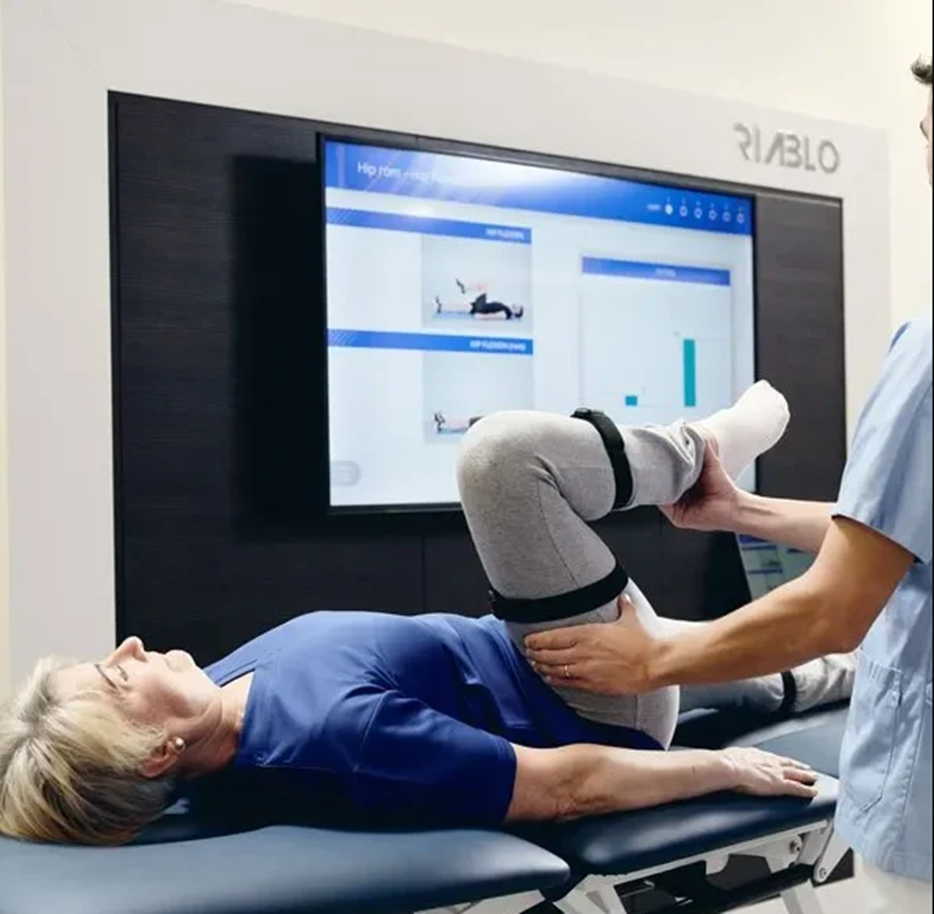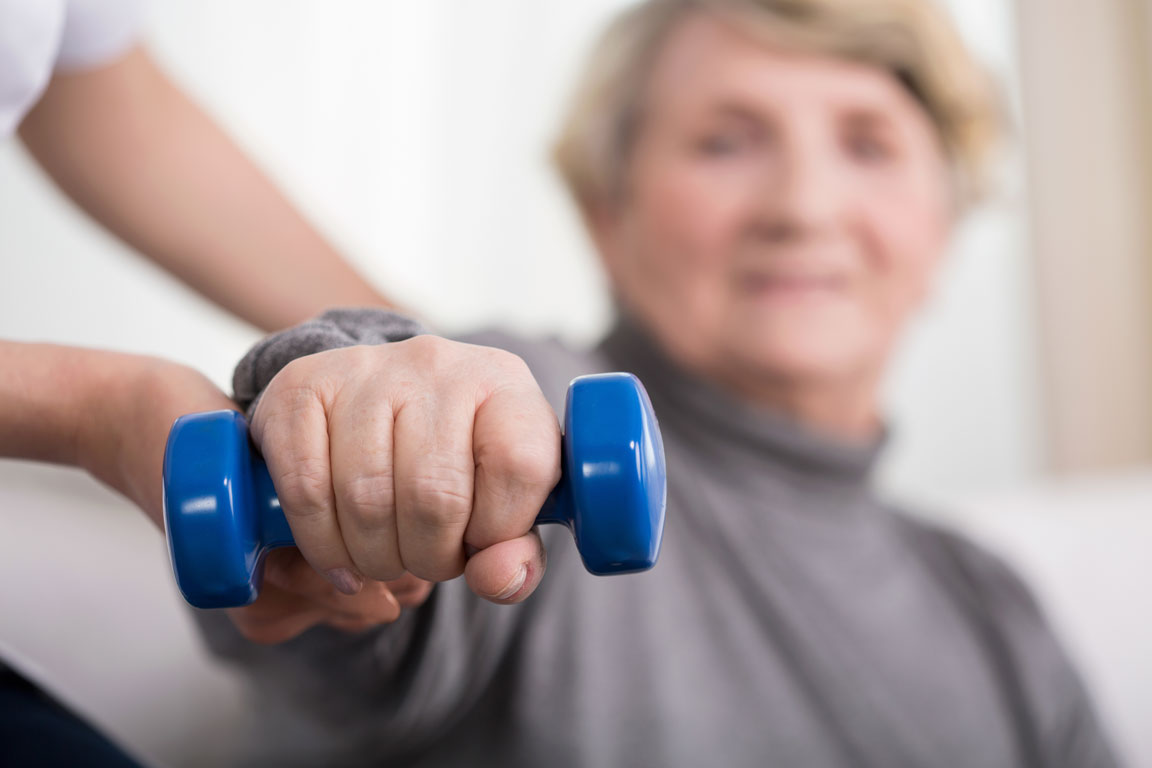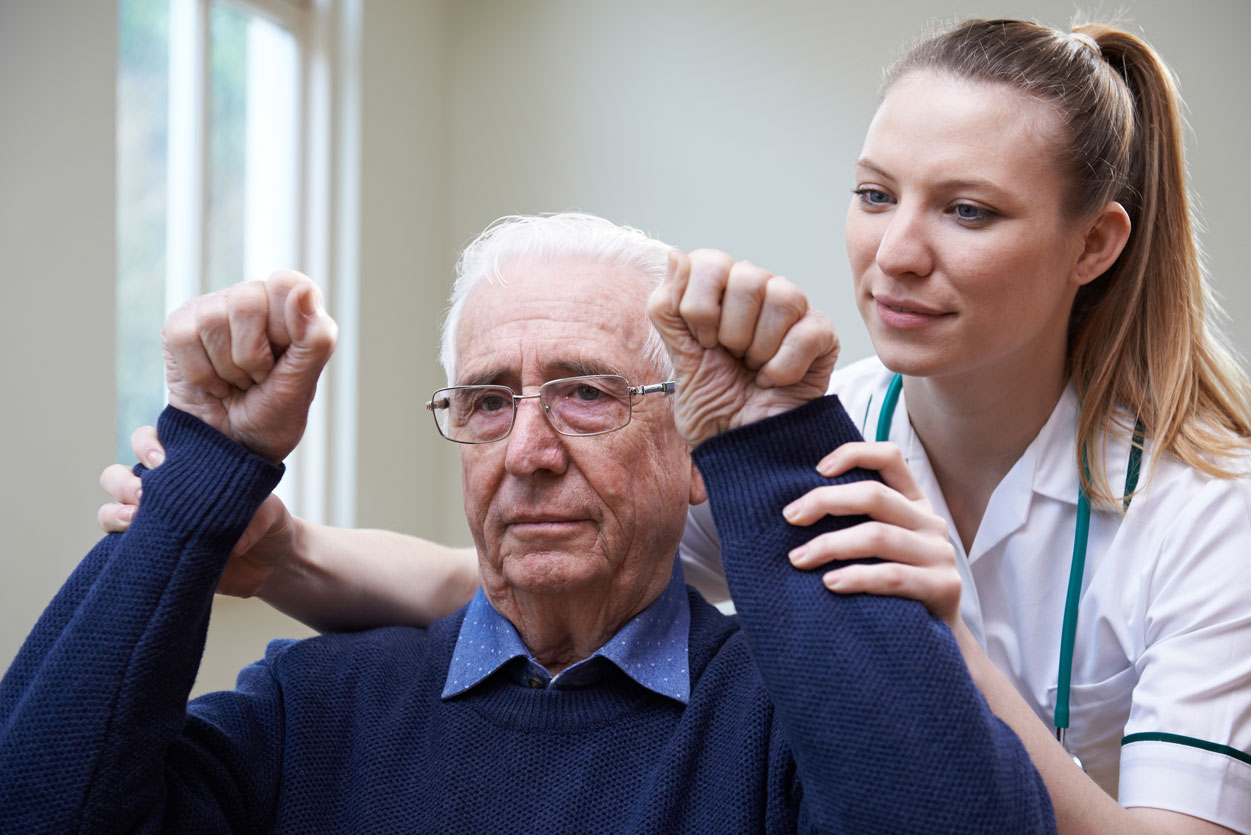Share

Effects of Biofeedback Training with Riablo on Balance Skills and Patients’ Compliance in Subacute Stroke Patients: A Pilot Randomized Controlled Trial
Stroke is a condition that affects brain function and leads to impaired balance and functionality. The rehabilitation process after stroke is critical to regain these skills. In recent years, video-biofeedback systems, such as Riablo products, have been developed for the treatment of neurological pathologies. The aim of this study, conducted in partnership with the University of Campania and the Santa Lucia Foundation, was to examine the effects of biofeedback-assisted balance training with Riablo on balance skills and patients’ compliance with the treatment process in subacute stroke patients.

Stroke patients may experience impairments in balance, posture and mobility due to the decline in motor control. This can lead to a reduced quality of life and low social participation. A significant improvement in the quality of life of post-stroke patients has been observed when their balance ability is improved. In this context, the positive effects of conventional physical therapy methods on patient balance have been proven by academic studies. The article examines the effects of Euleria Health Riablo, a biomechanical biofeedback solution. Accordingly, a controlled study was designed to measure the effects of training with Riablo, which includes the use of a combined biofeedback system (inertial motion sensors, force platform and exercise game-based feedback), on posture and balance skills, activities of daily living, sensory-motor abilities and training participation level in patients with subacute stroke.

Certain criteria were set when selecting the study participants. Inclusion criteria were a single MRI- or CT-confirmed ischemic stroke in the middle cerebral artery territory (hemorrhagic issues were excluded, as initial clinical improvement in such issues is due to reduced edema), ability to walk safely under supervision, preserved cognitive and language function (Mini Mental State Examination score ≥ 23), and age between 18 and 80 years. Exclusion criteria were severe neglect (positive results in 3/4 of the tests assessing neglect), previous neurosurgical operation, joint or spine fracture or surgery limiting strength or mobility.
Afterwards, the participants were randomly divided into two groups as experimental (Riablo) and control group. Both groups participated in 10 additional therapy sessions 3 times a week, each session lasting 20 minutes. The experimental group performed experimental training with inertial motion sensors and biofeedback using Riablo, while the control group performed conventional balance training with the same intensity and duration. All participants were assessed at T0 (pre-treatment), T1 (post-treatment, 20 days after T0) and T2 (1 month after the end of treatment, 50 days after T0) by an independent expert who was unaware of the study.
Riablo
RIABLO is an adaptive system consisting of a set of inertial measurement units and a force platform wirelessly connected to a computer. This system is designed to enhance standard rehabilitation programs by enabling the user to perform specified physical exercises through a video interface. Each inertial measurement sensor is lightweight and weighs 20 grams. These sensors communicate with the computer using the Bluetooth wireless communication protocol and operate at a sampling frequency of 50 Hz. Inertial sensors are placed with elastic bands at the level of the chest, mid-thigh and mid-shin. The aim of the system is to improve the rehabilitation of stroke patients by selecting six different exercises that mimic activities of daily living. These exercises include side-to-side load change, side-to-side load change on a swing platform, front-to-back load change, front-to-back load change on a swing platform, knee flexion with side-to-side load change and knee flexion with side-to-side load change on a swing platform.

For conventional rehabilitation, a protocol similar to that used for RIABLO training was adopted. The exercises are designed to prepare for regaining independence in activities of daily living and include the use of stable surfaces (e.g. stair treads) and unstable surfaces (e.g. swinging tables and balls of different sizes). The protocol included balancing techniques and emphasized achieving specific goals during the exercises.
In this study, 15 patients (4 female; mean age 57.80 ± 13.7 years, ranging from 36 to 78 years) were included. Of these patients, 9 were randomly assigned to the experimental group and 6 to the control group. Balance, mobility and disability were assessed using Berg Balance Scale, Rivermed Mobility Index and Modified Barthel Index. The NIHSS Stroke Scale and the Canadian Neurological Scale were used to assess stroke severity and the impact of stroke on the patient.